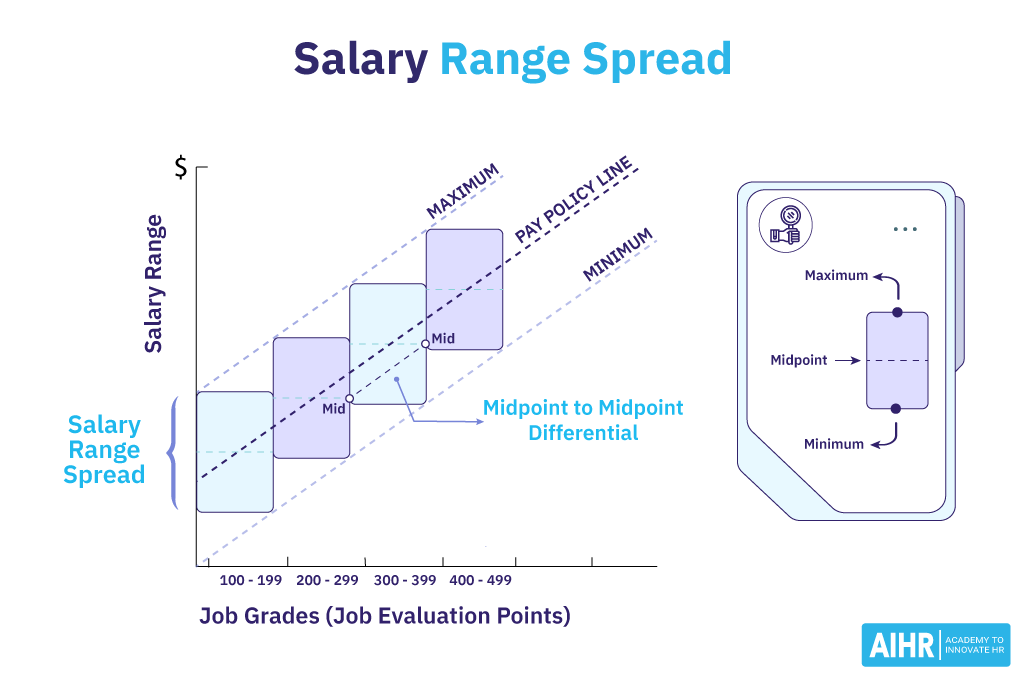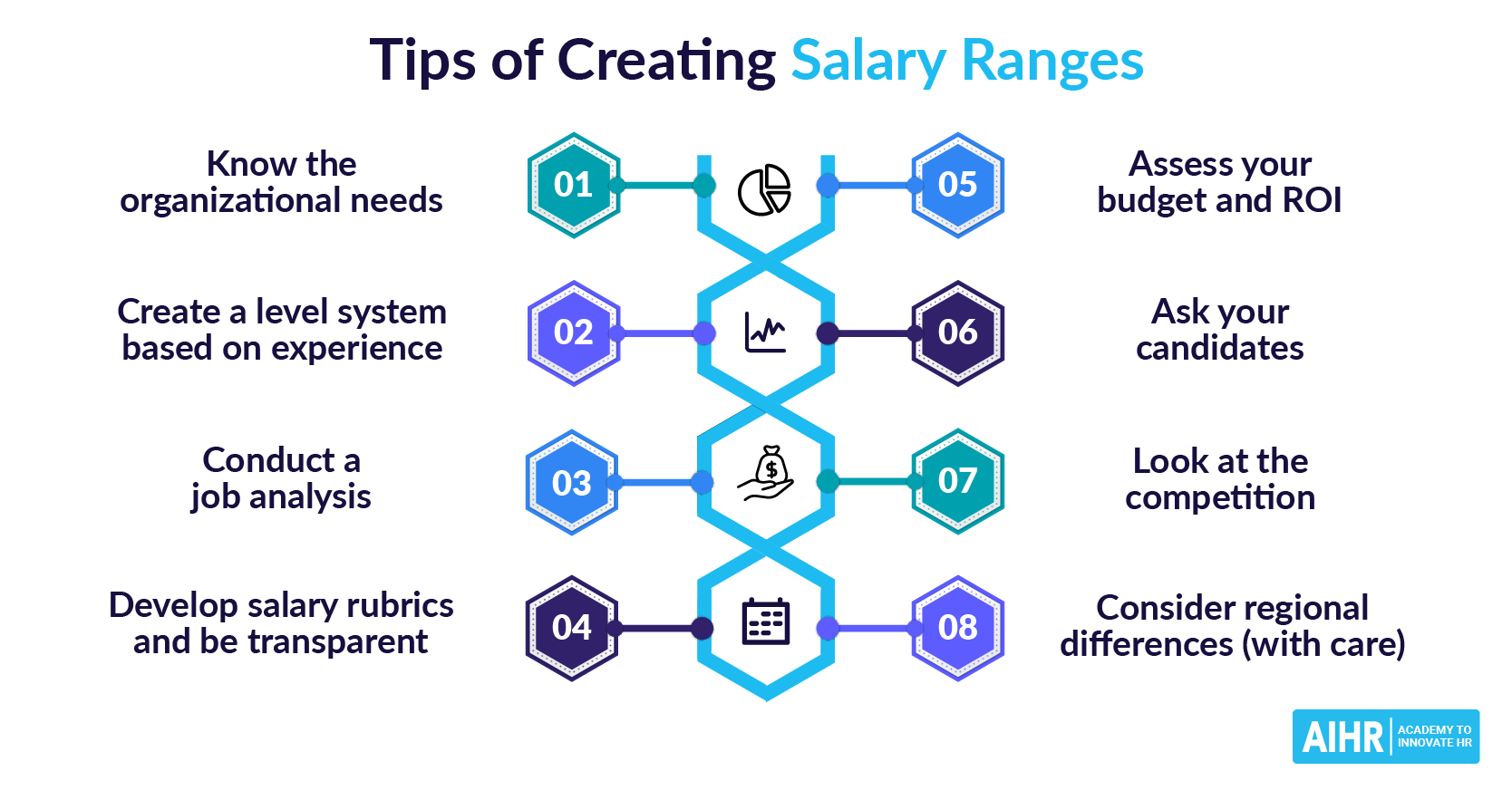Range Spread
What is range spread in HR?
A range spread is the range of pay established by employers to compensate employees for performing their job. It includes a minimum, maximum, and mid-range pay rate. For example, the range for a particular position can have a minimum of $45,000 and a maximum of $60,000:
| Minimum | Range midpoint | Maximum |
| $45,000 | $52,500 | $60,000 |
A salary range spread is established through understanding market pay rates and external benchmarking. A range spread is useful for multiple reasons:
- Job postings: Many jobs require a salary range spread to be posted, so it is useful to have this information on hand.
- Setting targets: You can create compensation targets and adjust along the way to ensure there is an appropriate spread of pay across the company.
- Establishing pay equity: You’re able to compare spreads across different departments and roles and understand the state of internal pay equity.
- Clear communication: Employees can be shown the salary range and where they fall within the range, making communication around salary clear and transparent.
- Plan salary increases: Companies are better able to understand salary increases and promotions if a clear range spread is present. For example, if an employee is already at the maximum of a range when it comes to annual increases, an employer has to make a decision on if a significant increase is needed or not (particularly when compared to employees at the minimum point).
Here is what salary range spread fits in the context of creating salary ranges:

How do you calculate the salary range spread?
Depending on the data you have access to, you can calculate range spread in a couple of different ways:
1. Use the minimum pay and maximum pay data. The formula is:
(Maximum pay – Minimum pay) / Minimum pay = Range spread
In other words, if the maximum is $50,000, and the minimum is $30,000, your range spread from the minimum to the maximum number would be:
($50,000 – $30,000) / $30,000 = 66%.
2. Use midpoints. If you know the midpoint as well as the minimum and maximum, you can do the following:
- To calculate the spread above the range midpoint: (Maximum pay – Midpoint pay) / Midpoint pay
- To calculate the spread below the range midpoint: (Minimum pay – Midpoint pay) / Midpoint pay.
What affects the range spread at your organization?
Some of the factors that could affect your range spread include:
- The use of broadbanding, which is a compensation approach that consolidates a range of similar job classifications into one pay band.
- The tenure of an employee. Many times employees that have long tenure are outliers when placed on a salary spread due to historical increases.
- The number of positions within the company.
- The complexity of roles; some roles and departments have a wider variety of roles and levels, and the spread might vary more.
- The pay grade structure in the company.
- The maturity of a company’s job architecture. If there are clear guidelines around job families, levels, and grading, understanding your range spread becomes easier.
What is a good range spread?
A good salary range spread is typically anywhere between 30% to 40%. However, this is heavily dependent on the job, job level, and the industry. Findings by the Economic Research Institute use the following spreads for these job levels:
- Administration/Operations: 40% +
- Professional/Management: 50% +
- Executives: 50-65% +







